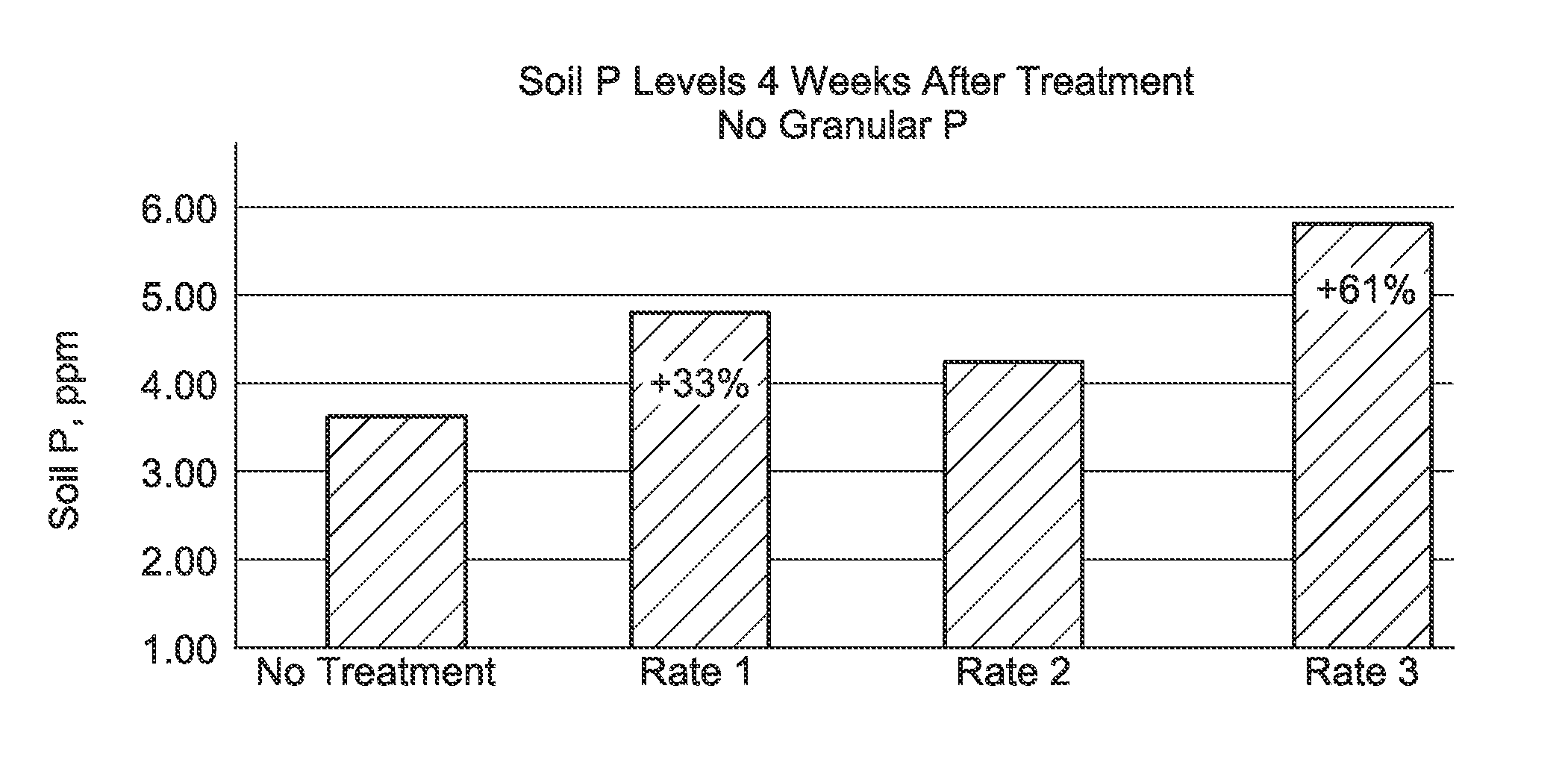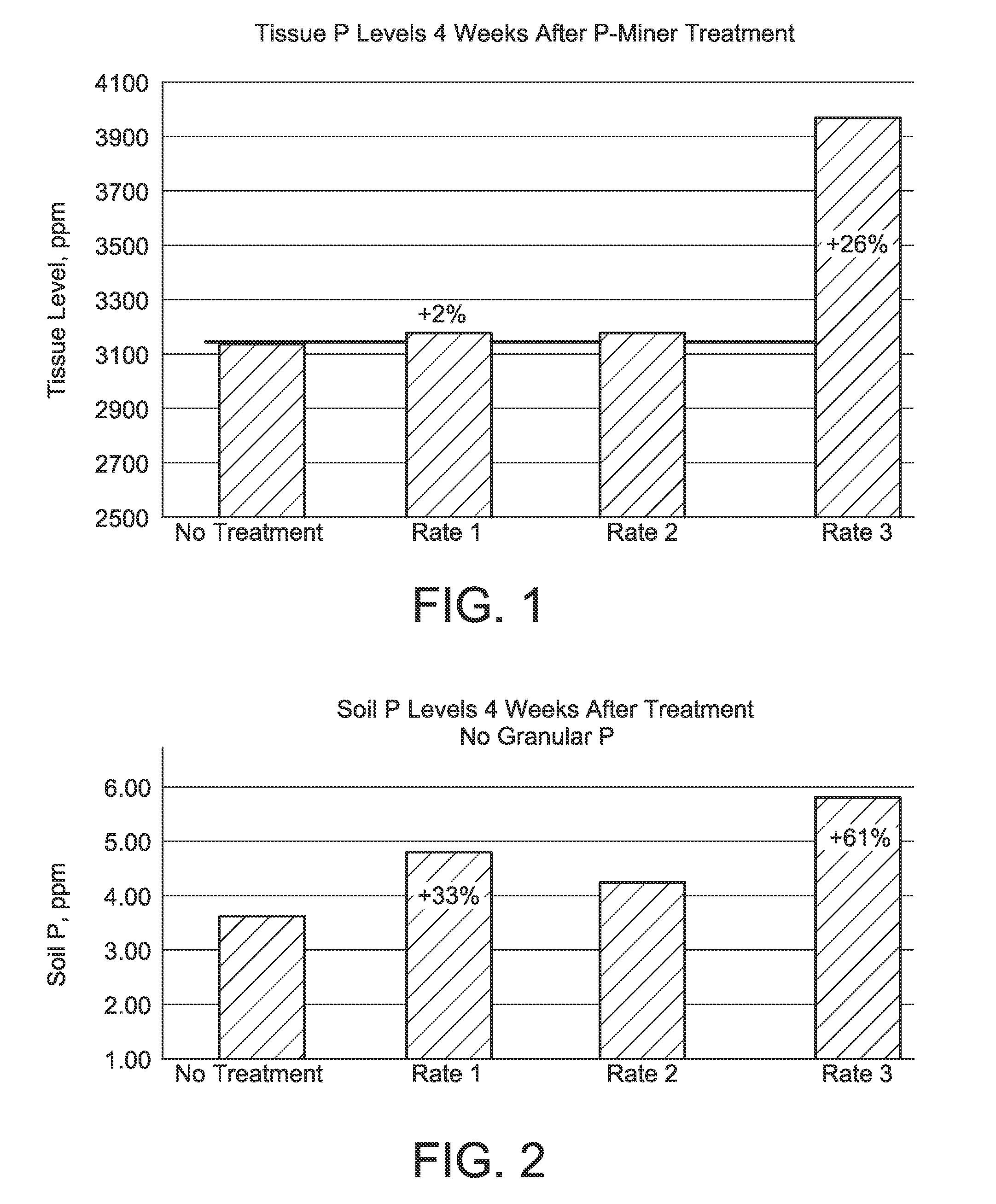Method to increase phosphorus uptake in plants
a phosphorus uptake and plant technology, applied in the field of plants uptake, can solve the problems of limited root uptake availability, high water pollution, and high reactive phosphorus, and achieve the effects of enhancing the natural release of plant-available phosphorus, reducing water pollution, and reducing water pollution
- Summary
- Abstract
- Description
- Claims
- Application Information
AI Technical Summary
Benefits of technology
Problems solved by technology
Method used
Image
Examples
example 1
Lab Batch Test
[0030]A lab batch was prepared using several organic acids to release the phosphorus and sugars to chelate and transport the nutrient. A simple experiment was performed to test the phosphorus releasing capabilities of the composition of the invention.
[0031]The trial batch was powder placed in 1-gallon jugs. Water was then added to the jug to dissolve the product. There were no issues dissolving the composition of the present invention. Two different dosages were applied to a small soil plug in the lab. The beginning phosphorus content in the soil was 8 ppm. The results, in Table 1, show that the product increases the availability of several key nutrients in the soil—including phosphorus.
[0032]
TABLE 1Nutrientcontent, meq / lNo treatmentRun 1Run 2% IncreasePhosphorus0.140.190.1728.6Sulfate0.962.191.5996.8Manganese0.091.011.161100.0Iron1.032.322.35227.0Calcium0.841.010.9516.7Silicate3.496.26.480.0
example 2
Evaluate the Ability of a Phosphorus Solubilizing Compound to Maintain a Greater Pool of Plant-Available Phosphorus for Turf-Grass Uptake
[0033]The experiment was conducted at the Auburn University Plant Science Research Center (PSRC) greenhouse facility, located on the Auburn campus. A Decatur soil (fine, kaolinitic, thermic Rhodic Paleudult with a high phosphorus fixing capability (via Al / Fe sesquioxides)) was used for the experiments. An initial soil test result revealed a soil pH of 6.0, soil P (Mehlich) of 11 pounds per acre (Very Low), soil K of 253 pounds per acre (Very High) and soil magnesium, and calcium of 300 and 1715 pounds per acre, respectively.
[0034]The experiment design was a 5×3 factorial of phosphorus rate and phosphorus solubilizing materials. Phosphorus rates were 0, 30, 60 and 90 pounds P2O5 per acre, mixed with the soil surface (top one inch) in a one-time addition as triple super phosphate (TSP) (0-45-0). Phosphorus rates were combined with one of three solubi...
PUM
| Property | Measurement | Unit |
|---|---|---|
| pH | aaaaa | aaaaa |
| diameter | aaaaa | aaaaa |
| diameter | aaaaa | aaaaa |
Abstract
Description
Claims
Application Information
 Login to View More
Login to View More - R&D
- Intellectual Property
- Life Sciences
- Materials
- Tech Scout
- Unparalleled Data Quality
- Higher Quality Content
- 60% Fewer Hallucinations
Browse by: Latest US Patents, China's latest patents, Technical Efficacy Thesaurus, Application Domain, Technology Topic, Popular Technical Reports.
© 2025 PatSnap. All rights reserved.Legal|Privacy policy|Modern Slavery Act Transparency Statement|Sitemap|About US| Contact US: help@patsnap.com


